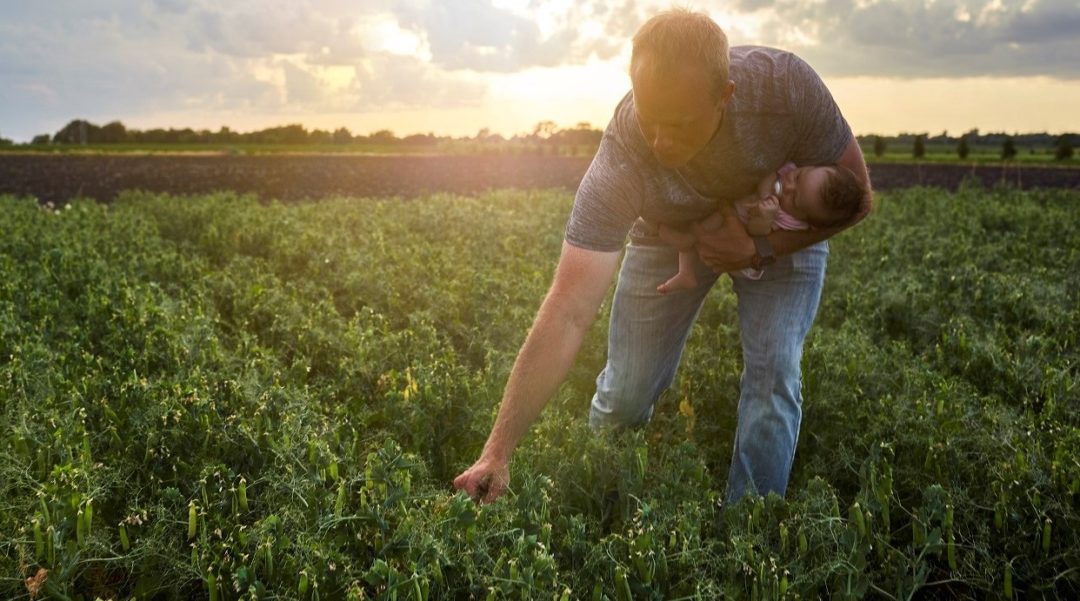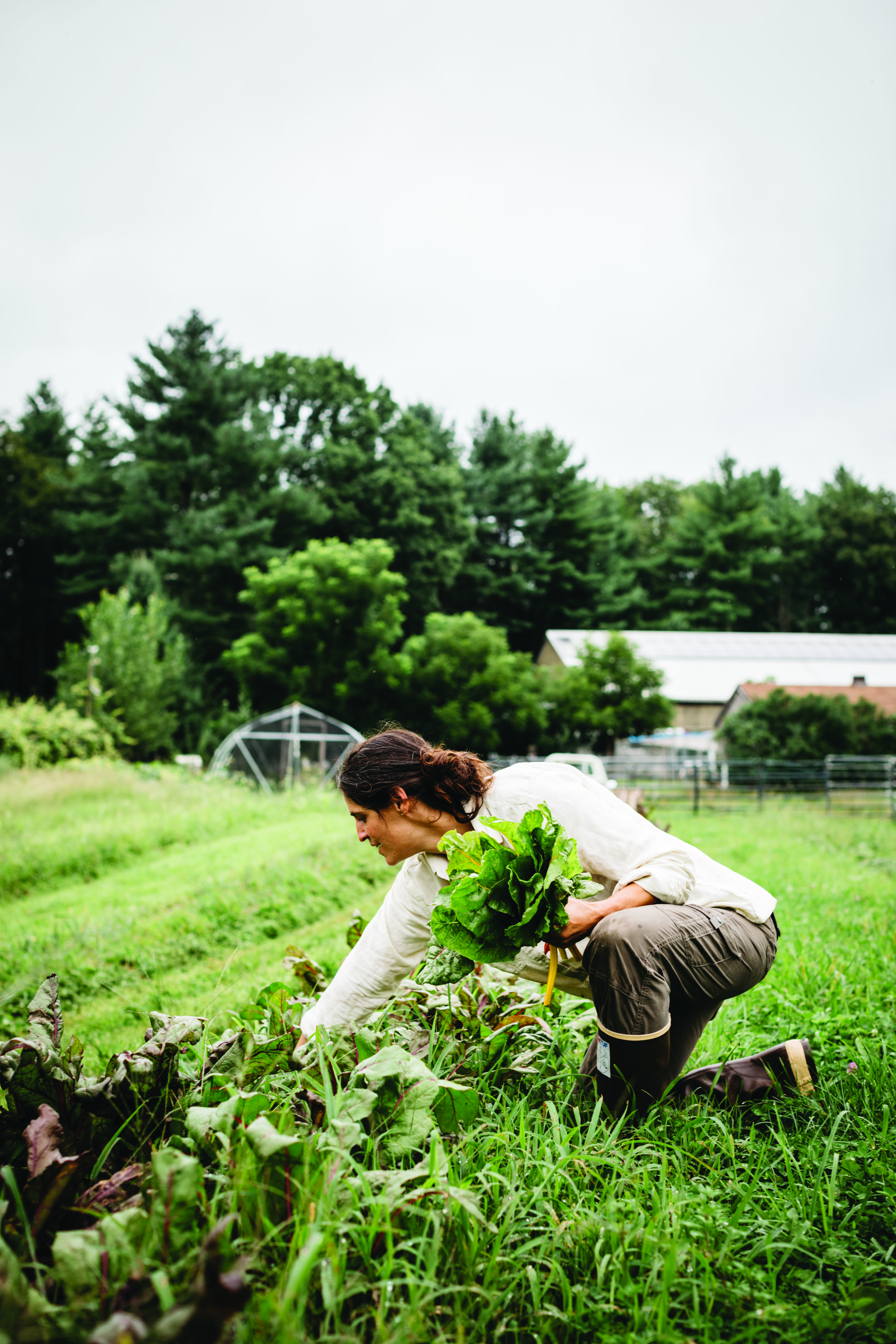
“The fact that our soils are collapsing is what is driving our focus on regenerative agriculture,” says Bethany Davis, MegaFood director advocacy & gov’t relations. “We have 60 harvests, or fewer, left. Not only is our food less nutritious than it was 50 years ago, but we are destroying our soils at such a rate that we won’t be able to feed the world.” Davis is quick to point out that it’s not all doom and gloom, though. “The most important part of our message is that there is something we can do about it! The solution to climate change is right under our feet: the soil.”
Here, changemakers share 25 key points that everyone should know regarding why—and how—we can make a difference.
1. Industrial agriculture = Degenerative agriculture. “Depending on the farming method used, soils are treated as either a living self-generating source of vitality, or just a lifeless medium for mono crops raised on a cocktail of chemicals, artificial fertilizers, and herbicides,” says Jim Richards, CEO of Milkadamia. “Highly mechanized industrial-scale chemical-intense farming has hastened the release of massive quantities of CO2 previously stored in the soil. At least 50% of the carbon previously in the Earth’s soils is already in our atmosphere. Adding to this, industrialized agriculture emits more CO2 than all forms of transport combined.”
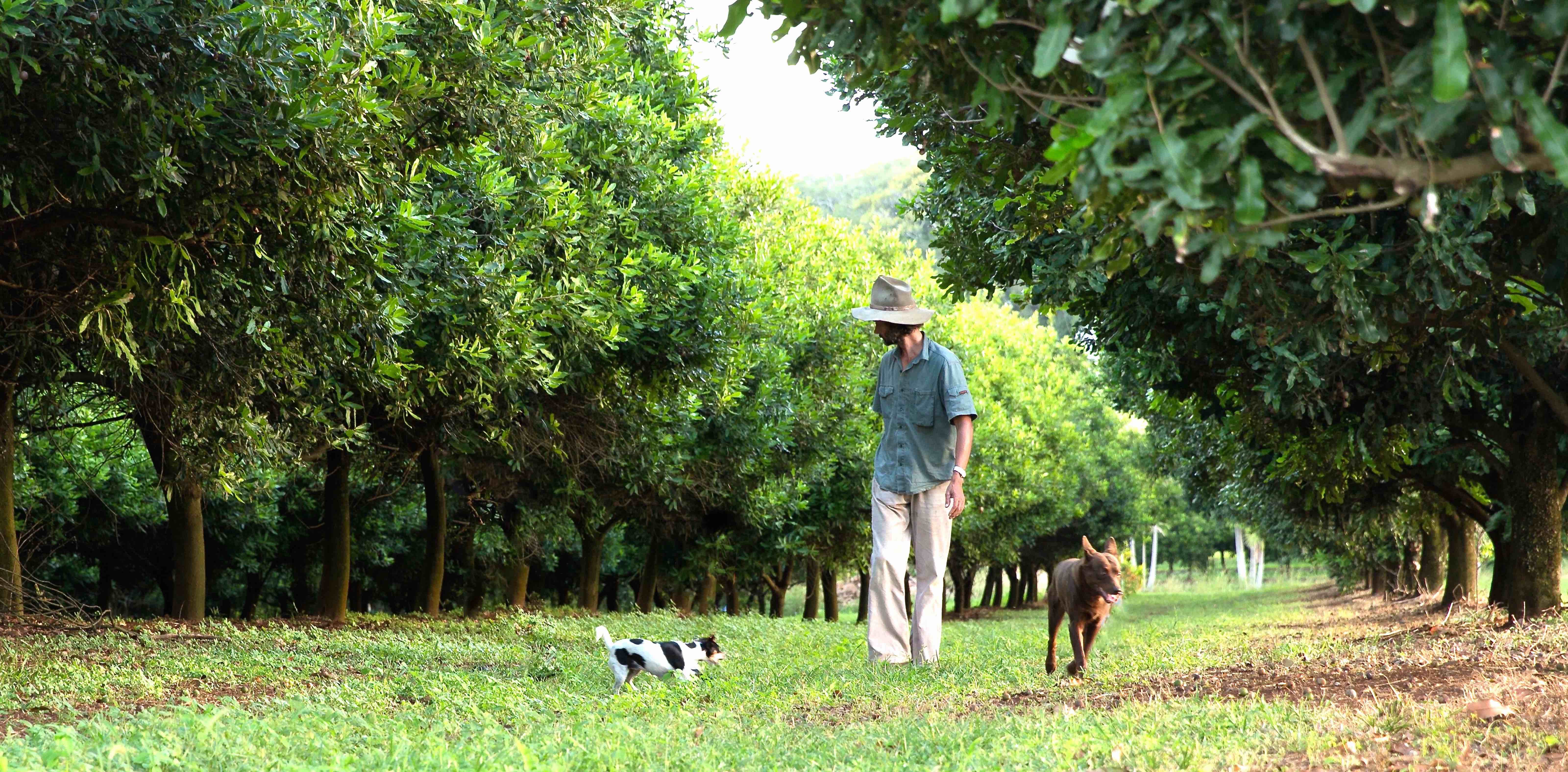
Practices like tilling (plowing or disrupting the topsoil to prevent weeds or loosen the ground to prepare it for seeding or planting), chemical ag (spraying with chemicals in order to manage pests or weeds) and monocropping (growing a single crop year after year on the same land) are degenerative, says Davis. “Massive monocultures with no tree lines for windbreaks allow the wind to erode land over time; tilling disrupts and breaks apart the critical fungal and bacterial mass; spraying chemicals like glyphosate or other broad spectrum antibiotics on soil also weakens the robustness of the soil microbiome, an integral part of the health of the soil; and monoculture systems tax the soil whereas rotational systems give it time to rest.”
Citing Regeneration International, Brian Zapp, Applied Food Sciences (AFS) creative director, notes, “At the current rate of soil degradation, it will take less than 50 years to no longer have enough suitable soil to grow the crops needed for humans to feed themselves.”
2. Regenerative Ag is the solution. “The water cycle is broken, leading to extreme flooding and drought,” says Thomas M. Newmark, founder and chair of The Carbon Underground. “The answer is soil, and soil is created rapidly via regenerative agriculture. Even in deserts in Western Africa there are regenerative farmers creating an inch or more of new topsoil every other year, and all of this newly created soil increases the land’s water-storage capacity. More water is stored in this soil water battery, increasing the likelihood that even torrential rains can effectively infiltrate into the soil and be stored underground.” That, he adds, helps prevent erosion and gives farmers a chance to withstand serious flooding; conversely, crops can draw upon this soil water battery during periods of severe drought.
The carbon cycle is also broken, Newmark continues, leading to global warming on a scale that threatens our species. Here, too, the answer is soil. “Newly created topsoil is approximately 60% elemental carbon and through carbon sequestration and soil regeneration we have a mechanism for reversing climate change.”
3. It’s essential that we heal our soil. Richards explains, “Our wellness, every aspiration we hold, and our very existence remain inextricably bound with the fate of soil, [which] we are losing at the alarming rate of 16 million soccer fields per year—30 soccer fields every minute of every day.” His message: “To save the Earth, we need to first save the earth.”
As Dave Herring, executive director of Wolfe’s Neck Center for Agriculture and the Environment, cautions, “We stand at a critical juncture in human history, a crossroads where collectively we must make decisions that head us down a path towards planetary jeopardy or revitalization. Earth’s resilience depends on the immediate action taken to reverse the long-ranging effects of climate change. Farming can and must play a role in the fight against climate change. With as much as 15% of greenhouse gas emissions currently coming from agricultural activity, we need to find ways to reduce and offset by capturing carbon in the soil. Regenerative farming practices implemented on a broad scale sequester carbon that enters our atmosphere and sink it back into the soil, building the foundation for a healthier food system.”
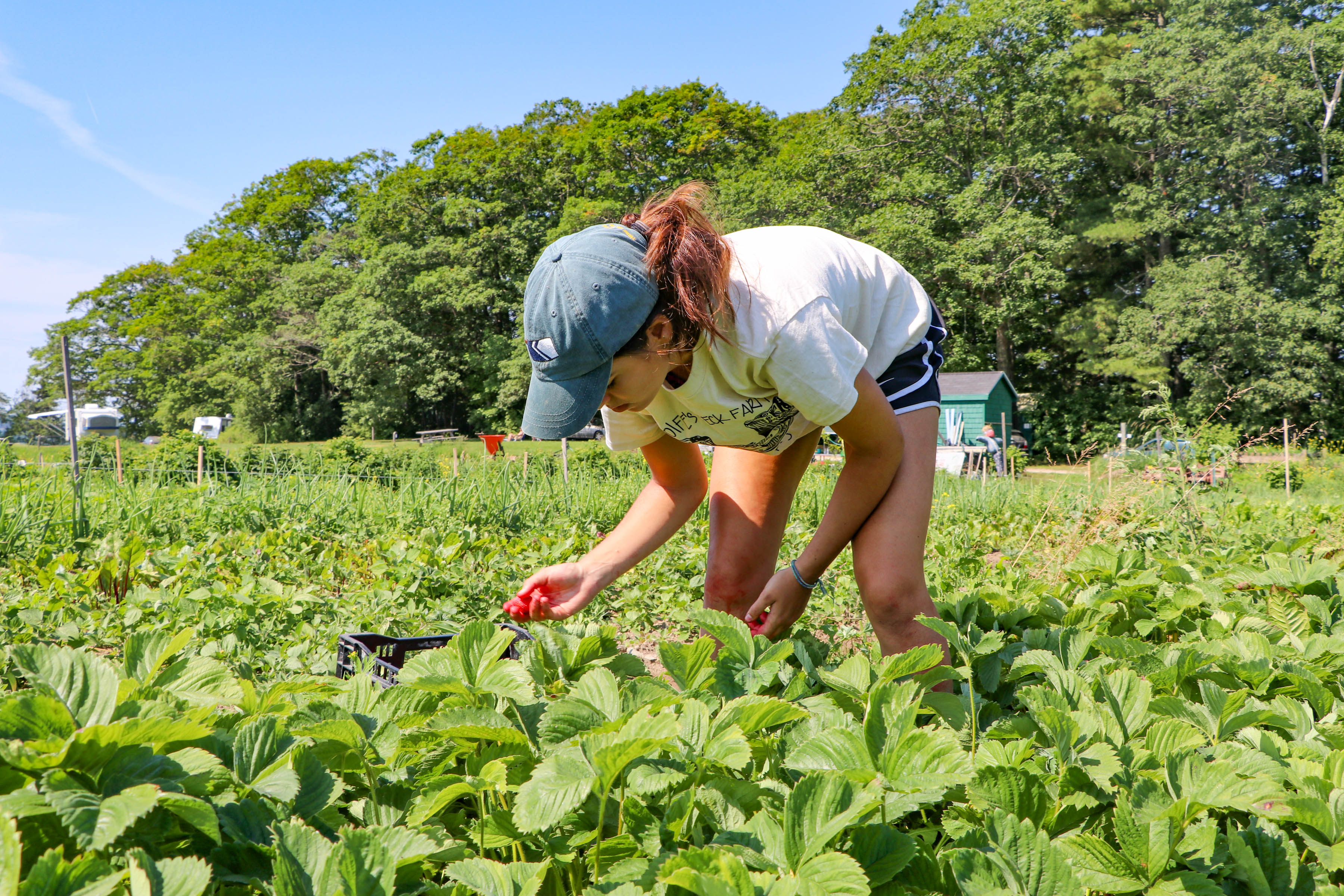
4. The world is at its tipping point. “This is a pivotal time in our climate’s history,” says Tyler Lorenzen, president of PURIS. “The future of our world, our children’s world, and our grandchildren’s world relies on us. There is an alternative solution to climate change that goes beyond just sustainability and maintaining current conditions but leads to restoring the natural system. Regenerative practices bring life back to deprived habitats, reversing climate change and rebuilding the damage done from years of intensive farming.”
Regenerative ag is a way to jump-start a positive chain reaction, adds EarthKind CEO/founder Kari Warberg Block. “Our land has the ability to renew itself, we just have to nurture it, be kind to it. We can benefit by understanding that we don’t always need to kill the things around what we’re nurturing in order to grow them, a belief I’ve always led with at EarthKind.” If we’re able to enact regenerative farming principles, she adds, biodiversity will increase, our soil will be enriched, we can improve watershed and also capture carbon in the soil with unprecedented impact. “We can save our land. Regenerative agriculture holds the power to do all of this.”
Agriculture faces some of the world’s biggest development, economic, and environmental challenges, acknowledges Simon Brayn-Smith, head of sustainability, Olam Cocoa. “Millions of farmers, particularly smallholders, who grow cash crops like cocoa, are living at subsistence levels, while natural resources, such as soil and forests, are being degraded or lost at an alarming rate. Meanwhile around a third of all food produced is lost or wasted. With the population set to increase by 2 billion by 2050, we cannot carry on the way we are. Tackling these issues is a huge task as no issue is isolated. For example, deforestation is often bound up with low yields and poverty. Equally, while many companies like Olam Cocoa have sustainability programmes in place, we must go beyond what is currently being done today and achieve far greater impact at far greater scale.”
5. Our health depends on change. With regenerative, organic agriculture, we can drastically reduce the incidence of four of the top seven causes of death in the U.S., maintains Bob Quinn, founder of KAMUT International and author of Grain by Grain. He says pesticides, herbicides, insecticides and fungicides are building up in our environment and our bodies. “Companies, like Monsanto, insisted for years that glyphosate, the active ingredient in RoundUp, was safe for humans and would break down quickly in the sunlight and soil. Except now we’re finding glyphosate in our rainwater. While it may not affect human cells directly, it has great effect on the billions of bacteria in our gut. And these bacteria outnumber our human cells; they help keep us healthy if they’re protected from harmful chemical poisons.”
6. Food can be more nutritious. “The nutrient value of food is collapsing, with food today delivering perhaps only 50% to 60% of the nutrient levels of a few generations past,” says Newmark. “The solution for this nutrient crisis? Regenerated soil, rich with nutrients and microorganisms, all working together to help plants create nutritional powerhouses.”
7. ...and more delicious. “In regenerative organic agricultural systems we feed and nourish the soil so that the soil can feed and nourish the plants,” says Quinn. “The immediate benefit to consumers is in the quality and taste of the food. If you have ever tasted a ripe tomato right off the vine grown in a regenerative organic system, you’ll never want to buy the tasteless ones from the supermarket again. Color and taste are really good indicators of good quality foods rich in health giving nutrients.”
8. RegenAg, in a nutshell. Regenerative agriculture, says Richards, “includes calling a halt to plowing and chemical application, using crop rotation, planting cover crops and trees, and adding organic matter to the soil. Under these conditions, vital subterranean microbes proliferate into astounding abundance. Plants become more deeply rooted, and the uptake of nutrients improves, giving us more nutrient-dense foods. With regenerative agriculture, the very structure of the soil heals, allowing the retention of ever more carbon in the soils ‘pores’ and slowing water runoff. Over the seasons the soil fertility compounds, and new top-soil is created each season. Basically, it’s the very opposite result we get from chemical farming.”
Low or no till, cover cropping, animal grazing, agroforestry practices, rotational crop systems...the consistent result of such practices is greater soil health, says Davis. “When it comes to regenerative agriculture, MegaFood is on a full-court press. We start at home, which is why we launched our Healthy Farm Souring Standard and have made it publicly available. We want to clearly communicate what is expected of farmers from whom we source and we want to show others how to source integrate regenerative practices as we build a more and more regenerative supply chain.”
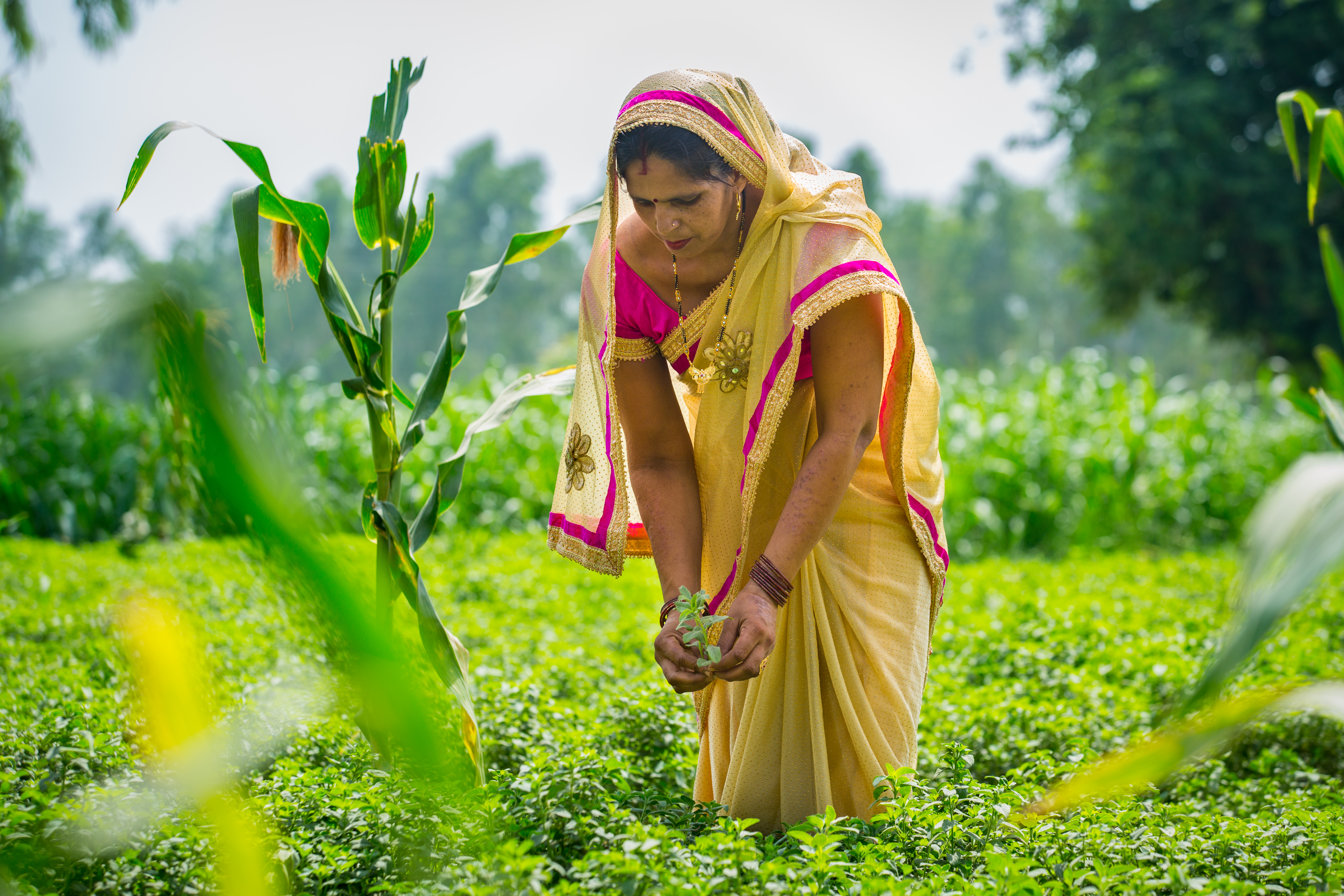
Courtesy of Dr. Bronner’s.
9. Soil is central—but there’s more. “We agree with movement leaders such as the Rodale Institute, and Regenerative Organic Certified, that Regenerative Organic Agriculture has 3 main pillars: Soil Health, Animal Welfare, and Social Fairness,” says David Bronner, CEO (Cosmic Engagement Officer), Dr. Bronner’s. “This model provides solutions for how we can mitigate climate change via carbon sequestration in the soil—and furthermore, looks at how animal welfare and socially just labor and production models are important to building a future in which agriculture is contributing to the vitality and health of both people and planet.”
From a supplier perspective, Zapp adds that the problem goes beyond pollutants, plastics and chemicals. “In many cases where raw materials are sourced, global living conditions are poor and laborers are easily taken advantage of. For companies like Applied Food Sciences, we recognize this problem and have taken serious steps by creating our own Responsible Sourcing Initiative that includes sustainable growing, socially responsible sourcing, and full traceability.”
10. Regeneration moves beyond sustainability. “Sustainability is just one step along the way to regeneration,” says Lorenzen. “We like to think about regenerative as a restoration where the environment and people work together to restore the planet.”
Keith Rowe, co-founder of White Leaf Provisions, adds, “Millennial and soon to be Gen-Z parents are looking for more from their food options that are currently available. Organic and GMO-Free foods are a great option but with the growing awareness of climate change and food nutrition, parents are wanting to know what the farming practices are behind their food purchases and they are increasingly wanting to know what food companies are doing to help combat these issues. All research is leading towards regenerative farming, which is above and beyond sustainable farming.”
At Ardent Mills, says the company’s sustainability lead, Phoenix Dugger, “We are excited to see more food companies realizing the need to leave land not only as good as we found it, but in fact, leave it in better shape.”
11. Consumers vote with their wallets. “We know consumers will pay more for higher-quality ingredients,” says Zapp. “Certifications like USDA Organic, Non-GMO Project Verified, etc. only tell part of the story. While they do add value to the product and enable manufacturers to charge a premium for the product, there is another piece of the puzzle that also adds value in the consumer’s eyes.” According to Mintel, he says, nearly all consumers say it’s important that a company acts morally/ethically; nearly two-thirds say they’d stop buying from a brand if it has irresponsible practices. “On the other hand, 82% of consumers also believe that companies with socially responsible initiatives have higher quality products and are willing to pay more for these products that align with their values of quality.”
Diana Martin, Rodale Institute’s director of communications, notes, “In the past, we asked farmers to grow the cheapest food possible. We didn’t ask farmers to grow food that tastes good, that is good for our health, that is good for the environment around us. Farmers are businesspeople. They are going to produce what the consumer is demanding. When all of us are demanding the cheapest food, it’s been a race to the bottom. I think we are seeing that change. You can see it in the organic movement, which is completely being driven by consumer demand.”
Martin adds that an emerging audience is willing to pay for products that align with their values. “One might be health but that also includes environment, how animals are treated, how farmers are treated…that’s why you see emerging labeling with things like Fair Trade, Animal Welfare approved, organic or non-GMO. People are starting to connect the dots and saying there could be a holistic system that encompasses all of these things. I think for a lot of people regenerative is really an answer to that.”
12. RegenAg can be profitable. “In 1986 I started transitioning my family’s farm, and it became one of Montana’s first 100% certified organic farms by 1991,” says Quinn. ”By switching from buying expensive chemical inputs to growing my own soil building cover crops as well as selling our production for organic premiums, I soon saw the economic and agronomic aspects of my farm greatly improve. This is common to the experience of most converts to organic ag, and the main driver in the interest in regenerative organic agriculture.”Regenerative Business: "A Race to Prosperity"
The conversation doesn’t stop at agriculture. “The simplest way to explain regenerative business is that it has a net positive effect, which is extremely important if we want future generations to have a healthy planet,” says Emily M. Olson, co-founder of ReGenFriends. “The current landscape of business largely focuses on extraction, separation and conquest; it isn’t working. Commerce creates culture; businesses have contributed to a culture of environmental and social crisis. Regenerative business leaves more than it takes, therefore it’s more effective than ‘circular,’ ‘green’ or even ‘sustainable’ business paradigms. If any of those movements had worked, we wouldn’t be where we are today? Do we want to circulate or sustain climate change? No. We have to constantly regenerate in order to sustain a healthy planet.”
Clearly, consumers do want to see that change. “Consumer interest in regeneration is outstanding,’ says Olson. “In our (combined) 50 years of consumer marketing research, we’ve never seen results like this before. 8 of 10 respondents, across every shopping category and demographic group, demand regenerative solutions today. While customers don't expect brands to be perfect, 95% expressed the desire to buy regenerative products and services from producers that are fully transparent about their impact.” The bottom line from Olson: “We believe a regenerative economy based on businesses utilizing the principles of regeneration offers the greatest economic opportunity of this century. We have termed it ‘A Race to Prosperity’ for those companies and organizations that embrace regenerative systems and values into the fabric of their operations.”13. In the big picture, it can save $. In Grain by Grain, Quinn talks about the high cost of cheap food, and the impact in rural communities with struggling farmers. “On a larger scale the environmental costs are more complicated because there’s no specific monetary value to track, unless there’s a natural disaster like the dead zone in the Gulf of Mexico, but at the end of the day we are all impacted on a regular basis since a portion of the taxes withdrawn from our paychecks are used to help pay for the cleanup of these kinds of contaminated areas throughout the country.” The cost to our health is the most important part, he adds, because there is an enormous impact in our lives and in the well being of our families.
14. Change can be swift. “I stepped into the world of organic in the mid 80s, when organic options in the supermarkets were available almost nowhere,” shares Quinn. “Now, 30 years later you can find organic in almost every store. That was the work of one generation. My challenge to the next generation is to walk through the door we opened and reintroduce the world to healthy, flavorful eating. If you look at it as a two-generation project, we’re already halfway there.”
Inspired by this progress, Quinn’s challenge to America is to be Chemical Free by ’43. “By replacing chemical agriculture with regenerative organic agriculture and artificially low-priced, low-value food with fair-priced, high nutrition, high-value food, we can resolve the paradox of the ‘high cost of cheap food,’” which Quinn says includes the economic failure of farms; the decline of rural communities and small businesses; the pollution of our planet; and chronic disease tied to poor diets.
15. One step starts it. “We just encourage everyone to take one step to start,” says Davis. “You can consider adopting our Healthy Farm Standard, pilot the Soil Carbon Initiative (see page 4 for details on the SCI) or join the Carbon Farming Network. You can partner with us on advocacy efforts that reduce chemical/industrial farming. Or you can create a campaign of your own. You can financially support one of the many regenerative organizations who are doing everything from training farmers, to pushing for climate-friendly agricultural policies. There are endless opportunities.”
Companies should work with the Regenerative Organic Certification (see #16) to develop an assessment of their supply chains, and ID where to take the first steps on the path toward becoming certified, advises Bronner. “Changing a supply chain, or manufacturing process, can be time consuming; however the benefits in the long run will reduce carbon footprint, and better position that brand among its competitors in the eyes of consumers who increasingly prefer to support companies that offer environmentally responsible products.”
“I highly recommend food businesses invest in spending time on the land,” urges Richards. “Learn about growing things and our county by getting dusty, dirty and sweaty. There is no substitute—appreciation and affection for the soils and plants seeps into us over time spent working the land. It is not possible to share what we haven’t experienced or teach what we don’t know.”
And that one step will lead to more. Shrene White, general manager of The Annex by Ardent Mills, says, “Ardent Mills has just scratched the surface when it comes to regenerative agriculture. We work with our farmers and customers to understand goals and objectives and how best to support a regenerative agriculture program. We just launched our Colorado Quinoa program. In partnership with growers in Colorado’s San Luis Valley, we are supporting a crop rotation that now includes quinoa and offers a water-saving opportunity; it is better for the land and water supply than planting other crops or leaving the ground fallow for a growing season.”
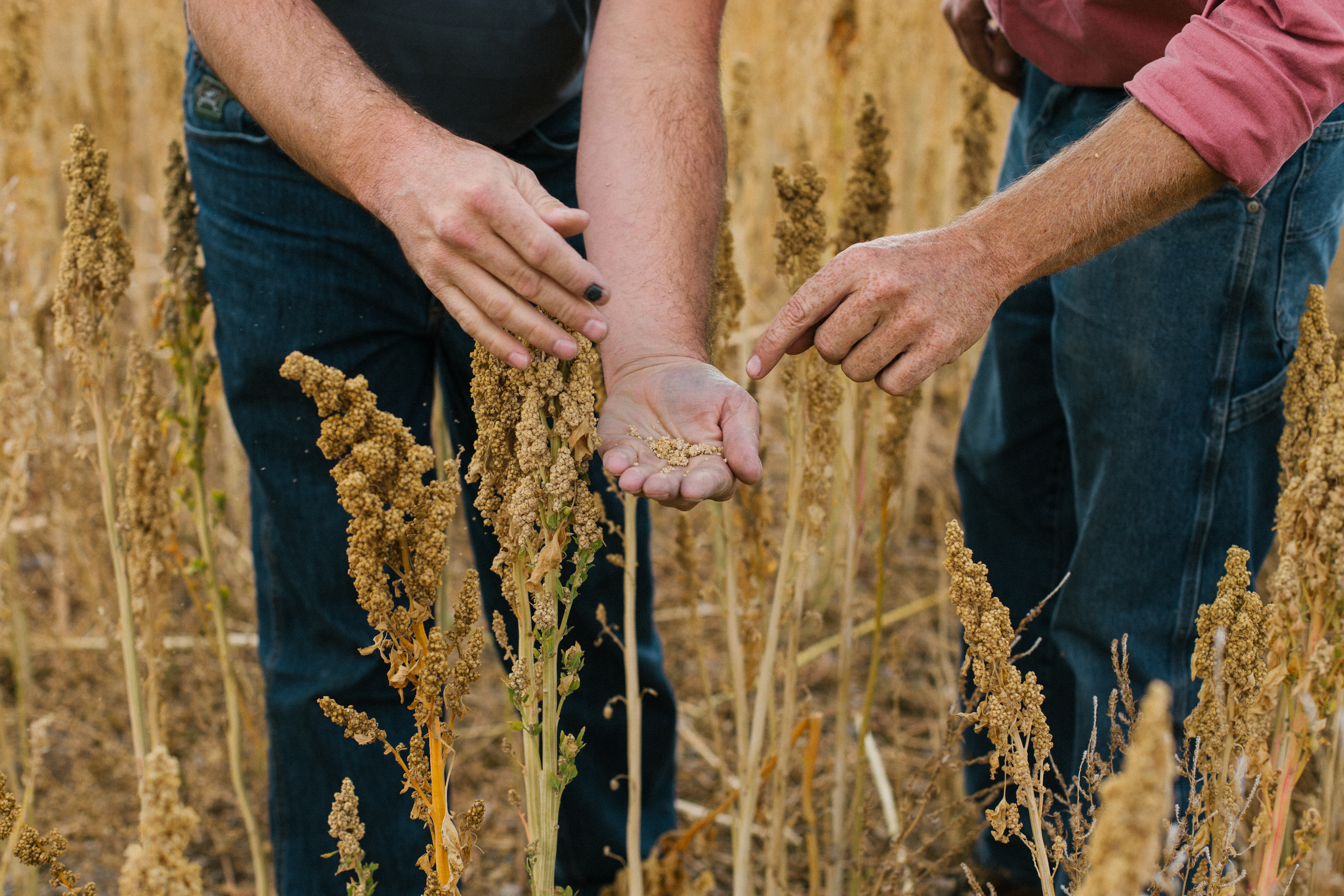
To farmers starting to make the shift, Marc Cool, seed and organic industry relations at Corteva Agriscience, says, “Being at the beginning of the food chain, we look at product innovation as the basis for how we can provide input into a regenerative, sustainable agriculture system. Our products, whether through the seeds we produce or our crop protection products, help move the needle toward a more sustainable future. This is where we feel we can make our biggest impact on a regenerative agriculture system.” He adds that Corteva helps support the choices of farmers with seeds that are non-GMO, nonchemically treated and meet the requirements for the National Organic Program. “We’re committed to offering producers the products, technology and knowledge to help grow within the organic space.”
16. Certifications set the standard. In 2018, the Regenerative Organic Alliance (a non-profit cohort of organizations and businesses including Rodale Institute, Patagonia and Dr. Bronner’s) began developing Regenerative Organic Certification (ROC), which takes the foundation of USDA certified organic (or its international equivalent) a step further. Martin explains, “Even though organic is still the top 1% of farming in the U.S., we felt we could go above and beyond. We felt, why don’t we develop this roadmap so farmers have a pathway to how they can keep improving?”
The goal is to set a standard and create a certification that helps a busy mom in the grocery store make good decisions, Martin says. “If at the end of the day the consumer can’t look at something, quickly understand the product and be able to support it with their dollars, then there’s not a business model that works for the farmer to be able to produce that product. The beauty of this is that we have a spectrum for farmers, and we have a spectrum for consumers who care about those issues to start supporting the farmers who are doing it right with their dollars.”
Bronner adds that, as a founding member of the Regenerative Organic Alliance, Dr. Bronner’s is committed to becoming one of the first brands to achieve ROC. “We are currently undergoing the pilot process for ROC, with main ingredients for our products including peppermint and virgin coconut oils. We’re proof positive that brands can restructure their supply chains to meet the robust standards for ROC, and still remain a profitable and successful company.” Martin encourages everyone to check out www.regenorganic.org for more information.
17. Tech advances make it easier. “OpenTEAM is the latest in our regenerative agriculture initiatives at Wolfe’s Neck Center,” says Herring. “Together with founding collaborators Stonyfield Organic, the USDA’s LandPKS project and Foundation for Food and Agriculture (FFAR), we launched OpenTEAM, the first open source technology ecosystem in the world to address soil health and mitigate climate change. OpenTEAM is projected to provide quantitative feedback on millions of acres of farmland by 2024.” He says OpenTEAM is a farmer-driven, interoperable platform to give farmers around the world with the best knowledge to improve soil health. “Currently, farmers are faced with an ever-expanding assortment of decision-making software,” he says. “However, these tools often do not ‘communicate’ with each other, making it difficult to transfer, share or use by farmers and scientists or in supply chains. With OpenTEAM, farmers are not only in control of their own data, but also able to enter data once to access all available tools in the OpenTEAM collaborative.”
18. Small changes = big results. “The start to making more sustainable and regenerative choices is taking a step back and looking at where all your ingredients come from,” says Lorenzen. “Making a regenerative choice can be an easy choice.” It can be as simple as trading out a crop grown across the world with chemicals to something U.S. grown—Using his company’s efforts as an example, he points to pea starch grown in the U.S. “Utilizing the tiny pea is a way to improve the soil, climate, and waterways in our neighborhoods. Instead of overcoming nature, peas reinforce it, promoting the return of carbon to the soil that was there in the first place, further enriching the soil with nitrogen and increased biodiversity.”
19. Transparency is a must. “Brands have the responsibility of educating their consumers on why their product is supporting the health of the planet,” says Lorenzen. “Foods’ journey is the most important message a brand can communicate to their consumers. Transparency to where and how that food was grown helps to give shoppers a better understanding of why it is so important to support regenerative/sustainable practices. “Customers of PURIS, he says, have the ability to work with the company to understand exactly where their ingredients are coming from.
20. Traceability, too. Zapp says this is an often-overlooked piece of the stewardship puzzle. “If you work with AFS ingredients, you can track its life from the plot of earth that it was grown, through all points in processing, to the hands of the consumer. What matters most, however, is the story that it tells when it gets there. Is there accountability?” Traceability, he says, “is the proof that what we, as a business, are working so hard towards is actually being adhered to. It is the paper trail for ingredients, and product makers must understand that it is a critical part of selecting a quality supplier. With traceability comes economic accountability and a wealth of knowledge about a product, including growing conditions, employee pay stubs, receipts, processing conditions. With traceability, we can demonstrate from seed to label exactly how your ingredient got to your product.”
Beyond that, Zapp continues, “Traceability of foreign suppliers is not only a measure for quality and fairness, it is an important safety measure against adulteration and bio-terrorism. This is a key element to the success of AFS’ Responsible Sourcing Initiative and Foreign Supplier Verification Programs (FSVP), a developing requirement for all importers of botanical food products as part of the Food Safety Modernization Act.”
Olam Cocoa, says Brayn-Smith, has committed to achieving 100% traceable cocoa volumes from their global, direct origination supply chain by 2020. “Technology is integral to achieving this goal and we continue to scale up our range of digital tools. At the farmer level, the Olam and Farmers Information Systems (OFIS) record sustainability data such as bag-level traceability, training activities, labour and agricultural practises on farms, as well as GPS mapped data like farm size and distance to infrastructure. OFIS is also enabled to make mobile money payments to farmers, providing access to financial services. Digital tailored Farm Development Plans (FDPs) deliver personalised advice to each farmer based on data about their farm.”
21. Collaboration will spark greater change. “I see this movement progressing toward open sourcing regenerative agriculture information,” says Warberg Block. “We live in such a competitive society that companies conducting research for their personal agriculture methods often keep what they’ve learned to themselves, especially their mistakes. However, if we begin to open-source our research on regenerative agriculture and all things agriculture, then we can save time conducting the same experiments and build off the individual strengths of each other. Instead of the 3.2 million farmers in the USA working alone, we could have the 3.2 million Americans, the 476,000 farmers in the UK, and others, working together. Full supply-chain transparency is a principle that I embrace at EarthKind, making sure that, under all circumstances, we always support the integrity of our American farmer supply chain.”
We have to create a system, stresses Andrew Pittz, farmer-in-chief of Regenerative Farm & Food Collaborative. “We’ve unveiled an entirely new brand that can lift up and celebrate farms like my family farm Sawmill Hollow Family Farm—which is the first aronia berry farm in the U.S.—and other people’s family farms. That company is called the Regenerative Farm & Food Collaborative—or RegenFoodCo for short. The way I see this working is, we're going to have to have a dialogue—what I refer to as open source agriculture—and we’re going to have to share best practices whether it’s on the growing side for regenerative, whether it’s on the scientific side like Rodale Institute...we're going to have to have that inquisitive mind and communicate the values of regenerative agriculture when it comes to brands, and we have to have the infrastructure for processing in place that takes regenerative crops and turns them into value-added ingredients and branded products that go to the end consumer. We have to do all of those things. This is a call for all of us to co-create a regenerative system that we’re all proud of and that can add a lot of value to the world.” A goal of his company, Pittz adds, is to have a banner that can connect the value and ethos of regenerative agriculture that the retailer and consumer can embrace. This, he says, will create a feedback loop that celebrates the farmer, that celebrates the brand, that celebrates the retailer, and that celebrates the natural products community.
The Carbon Underground’s Newmark is already seeing the benefits of collaboration: “We know that many world and community leaders genuinely care for their citizens and want people to enjoy food security, clean water, and nutritional abundance. These leaders have been desperate for solutions, and we’ve helped communicate the developing science on regenerative agriculture. The same applies for business leaders: Every business leader with her or his eyes open appreciates the fragility of global agricultural supply chains. Many businesses have expressed their concerns that agricultural products that are key to their business are being whipsawed by droughts, floods, disappearing groundwater, and the disappearance of soil and fertility. Many important foods are likely to experience world shortages due to climate-driven challenges...Crop by crop, manufacturers and consumers should expect to see major supply disruptions. The solution? Once again, it’s about regenerating and reviving degenerated ecosystems, and there are regenerative solutions for every crop.”
“We also utilize our networks,” says Davis. “We engage our peers—other brands, suppliers, NGOs, retailers, every member of our tribe—at every opportunity on the regenerative ag issue. We focus on education, engagement, coalition building and standard building. We are founding members of the Carbon Farming Network at Green America and sit on the design team where we have built the Soil Carbon Initiative, an outcomes-based standard that helps to measure and increase soil health and carbon sequestration.” Beyond that, Davis says MegaFood has chosen to focus on advocacy and policy work. “Last year we worked with the Environmental Working Group to file a legal petition to the EPA to end the use of Glyphosate as a desiccant which resulted in an open comments period which captured over 100,000 comments of support. Regenerative ag touches our farmers, products, our communities and our advocacy.”
“Collaborate more” is also Herring’s advice. “Seek out organizations who are like-minded yet have diverse expertise and different perspectives. Listen to farmers. Make sure farmers have a seat at the table and that solutions are farmer-driven. Reflect on your own production and practices. Take a good look at sourcing to identify areas where improvements can be made to support farms that are using regenerative practices. Finally, consider joining OpenTEAM. We are welcoming collaborators.” (Visit www.wolfesneck.org/openteam/.)
22. Farmers are the stewards. “I work with organic farmers every day,” says Martin. “These are amazing farmers who care so much about their land and the people that they are feeding. Even in industrial chemical agriculture, a lot of those farmers are honestly victims of that system. We feel like there’s a spectrum. How can we keep moving farmers in the right direction from conventional agriculture toward conservation towards organic and then towards the ultimate goal of regenerative organic ag that’s even more holistic?” Rodale offers resources to help farmers do just that on their website, and with the ROC.
“We believe farmers are stewards of the land and want to do what is best to keep their farms viable for the next generation,” says White of The Annex. “My advice is to work closely with farmers to understand their needs. We never tell a farmer how to farm, but we do help connect them with new opportunities and technologies in the market.”
To farmers and other considering making changes, Quinn encourages: “Follow your conscience and do your own research. I know how hard it is for farmers to change their way of doing things. It can take years, but in the long run your soil will be the better for it and so will your bank account, not to mention the health of not only your family but also your community and our planet.”
23. Retailers make the difference. “Retailers led the charge for the NonGMO Project and for NOP organics,” says Newmark. “Retailers can help accelerate adoption through point-of-sale information and by supporting brands that are part of the regenerative revolution.”
Warberg Block’s advice: “Communicate that regenerative agriculture is bigger than just the farm and the farmer. According to FAO, about 99% of the world’s food supply comes from land-based production, with around 50-70% of that land being devoted to agriculture. Regenerative agriculture shapes the entire farm-to-table process, and directly impacts consumer food quality, environmental integrity, our health, and economic stability—these are points that are vital for retailers to share.” When talking to consumers, she says, “emphasize the power of regenerative agriculture’s chain reaction, and contrast it with standard industrial agriculture practices. This can be done through the tools of simplification, visualization, the use of powerful statistics, and most importantly, conveying consistent messaging to consumers.”
In communicating, think of it like ROI, suggests Pittz. “There’s a return on the intrinsic value of the soil with regenerative agriculture and it compounds over time, like compound interest. Retailers get this more than anybody. If you go to a store and spend a dollar, it’s going to circulate through that community much more so than if you don't. The value retailers provide is similar to the value a farmer provides. We’re all farmers by proxy, and I think the natural retailer really has the unique positioning to communicate the value of regeneration in the soil and its compounds interest for humanity, and in the value of that dollar being spent in that store for that healthy product as a multiplier effect in and of itself. I think the two are linked.”
Retailers can position themselves as part of the solution by creating prominent space for regeneratively farmed produce and products. “We would urge retailers to draw more attention to products that are regeneratively farmed much of the same way they promote them as organic, GMO-Free or even sustainably farmed,” Rowe says. “With growing concerns over climate change, degenerative farming practices, food nutrition, and the use of toxic chemicals on our crops…all of these aspects together wreak havoc on our health and the health of the plant which leads to the loss of biodiversity. There is a farming method that can address all of today’s pressing issues, we simply need to begin driving the attention towards it.”
Bronner adds, “We encourage retailers to learn about Regenerative Organic Certification, and prioritize buying and stocking products that are Regenerative Organic Certified beginning, we hope, next year. This certification will set the bar for a true standard that defines regenerative organic agriculture with integrity.”
That said, beware of the buzz: “With so many brands profiting off claims and buzzwords that consumers seek, it can be difficult to fully understand if and how a brand is helping preserve the environment,” says Cool. “In that regard, I believe consumer-facing retailers have a responsibility to be as forthright and transparent about these initiatives as possible, via marketing and labeling that provides genuine information and is based in fact, helping consumers understand these facts rather than just promoting some of the fashionable buzzwords. One of the best ways to do this is to collaborate with companies throughout the food chain, help understand and develop improved systems based on consumer demand, and show what steps are being taken to help nurture and preserve the environment.” 24. Up the interest with a story. “Customers at the retail store level really seem to connect to stories more than hard facts or stats,” says Dugger. “Any story that gives color or background to the facts of what is happening on a farm does a far better job than a certification or a statistic.”
“For MegaFood, our social impact is a part of our brand identity,” says Davis. “Advocacy for and commitment to regenerative agriculture is the very fabric of our brand and we are working towards more and more of our suppliers being regenerative. As we looked at our audience and looked for the way to explain this important concept, we wanted to make it simple. As a supplement company, we make probiotics. And our consumers understand the importance of the gut microbiome, so we used that concept to help people understand the importance of the soil microbiome. Additionally, being a nutrition company, it makes sense to talk to our retailers and consumers about how conventional agriculture denigrates the soil resulting in less nutritious food. The story of the future of our food is a story in which everyone can find their role, their unique story. We suggest people learn about the issue and speak about what resonates and what is in their wheelhouse.”
25. Education is essential. “We’re very active in engaging with consumers, to help educate them about the importance of Regenerative Organic Agriculture,” says Bronner. The company also is championing the issue among other progressive businesses, sharing resources and encouragement to help bring them on board with the Regenerative Organic Agriculture movement. “Per our efforts, alongside other leaders in the movement such as Patagonia, Lotus Foods, Guayaki, and Grain Place Foods, the movement is growing, and we feel confident that consumer support and demand for regenerative products has huge potential.”
The Future Looks Bright...Right? “People are starting to see that the ripple effects of saving 30 cents on a tomato are not worth it—we are paying for it in other ways,” says Martin. “We need to rethink this thing that industrial ag is the norm but it’s actually this freak experiment we’ve been doing for 70 years. People are starting to realize that experiment is failing.”
When asked how he sees things progressing, Newmark said, “At the speed of emergency and inevitability. The world is going to learn how to grow foods regeneratively or there will be no food to eat.” He adds, “The industrial agricultural system represents the magical thinking that, with the right synthetic inputs, we can produce endless nourishing food even in damaged ecosystems. We see now that this magical thinking isn’t working—we know how that movie tragically ends. So how quickly will the world shift over to regenerative practices? It’s already happening. We’re already have heads of state asking The Carbon Underground for guidance on converting conventional systems over to regenerative. We have many of the world’s largest food companies working with us to accelerate this transition. The solutions are shovel ready and there are no barriers to adoption. It works, and once farmers learn about it they’ll discover they can make more money when soils are healthy and the soil-water battery is recharged.”
We have control, Quinn adds. “More than 6% of the foods at your local market are organic. At the current growth rate of 10% a year we have the potential to reach 100% in about 30 years. Imagine it: No more pesticides or herbicides or other questionable chemicals, just cleaner, healthier food, soil, water and air. Some people think we can achieve it sooner, but I’m cautiously optimistic that ’43 is a realistic goal.” And if it happens sooner? “That,” he says, “would be amazing.” WF

